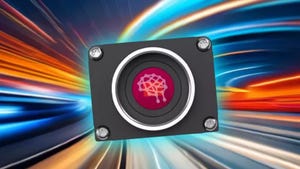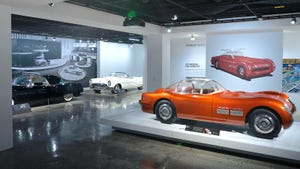March 28, 2011
If you are not aware ofthe annual FIRST Robotics Competition, you're missing out. This contest, whichis held by FIRST (the organization founded in 1989 by renowned inventor DeanKaman to inspire young people's interest andparticipation in science and technology), is a contest among teams of studentsto determine who has invented a robot that can best handle a given series oftasks. The tasks the robots must complete change each year.
This year's competition, dubbed Logo Motion, requiresrobots to compete across a flat27' x 54' foot field and hang as many inflated plastic shapes (triangles,circles, and squares) on their team's grids as they can during a 2 minute and15 second match. The higher the teams are able to hang their game pieces ontheir scoring grid, the more points they receive.
Devil Botz checklist |
With more than 2,000 teamscompeting in this year's competition, it's impossible for us to cover them all,so we decided to focus on one located not far from Design News' home offices in Lexington, MA. The team we'refollowing is Burlington High School's team #2876, better known as Devil Botz.
Though Burlington High'steam is made up largely of freshmen this year, this is the third year theschool has entered the FIRST competition and a few seasoned seniors remain onthe team. Devil Botz is 90 percent student managed and 10 percent mentor guidedby industry experts from companies such as Oracle, MIT Lincoln Labs and PTC.
The students do all thework, make all the decisions and operate as a team. Of course, this means thatthe results can, at times, not deliver to expectations; but that is as much apart of the FIRST learning experience as anything else.
For this year'scompetition, the team has designed a robot with a single rotating arm that canpick up game pieces from the floor and hang them on all scoreboard locations. Apneumatic system is used to extend the arm an additional 16 inches to reach thetop row - a key capability in this year's competition.
Throughout the project,the students used PTC's Creo Elements/PRO 3D CAD software to create preliminarydesign models. The models were used to evaluate design ideas, determine theoperating envelope and validate inspection requirements.
DB.3DPrototype |
As an example of how thestudents used PTC's software, their first design was a three-piecemulti-articulated arm. In this design iteration, the team discovered that it wasvery difficult to find the operating envelope until the pneumatic cylinderswere attached with kinematic joints and constraints. Once these additions weremade, the team members were better able to understand the full range of therobot's motion.
During the prototype andtesting phase, the team collaborated with Minuteman Controls, a localautomation and controls company, to work out issues with the pneumatic system.
To move the robot arm upand down, the team opted for a mini block-n-tackle cable system. Although thisoption proved to not be as fast as the direct drive prototypes the team initiallybuilt, Devil Botz found that it gave the programmers and the drivers much morecontrol over the arm.
So far this year, Devil Botzhas entered two local competitions and will also be participating in the Bostonregionals.
As much as the FIRST competitionis about building robots to win the event, it is just as much about teachingthe students to experience all of the ups and downs associated with designingadvanced technology systems. During the competitions so far this year, the teamhas experienced many of the mishaps that tend to occur in these events, such asinconsistent wiring connections, temperamental battery connections,communication interference between the controls and the robot, and new driveranxiety.
Despite these setbacks, DevilBotz has proven it has the right attitude -- as the team adopted a new motto in advanceof the upcoming Boston regional event April 7-9, 2011. That new motto is: Competition Ready.
You May Also Like





